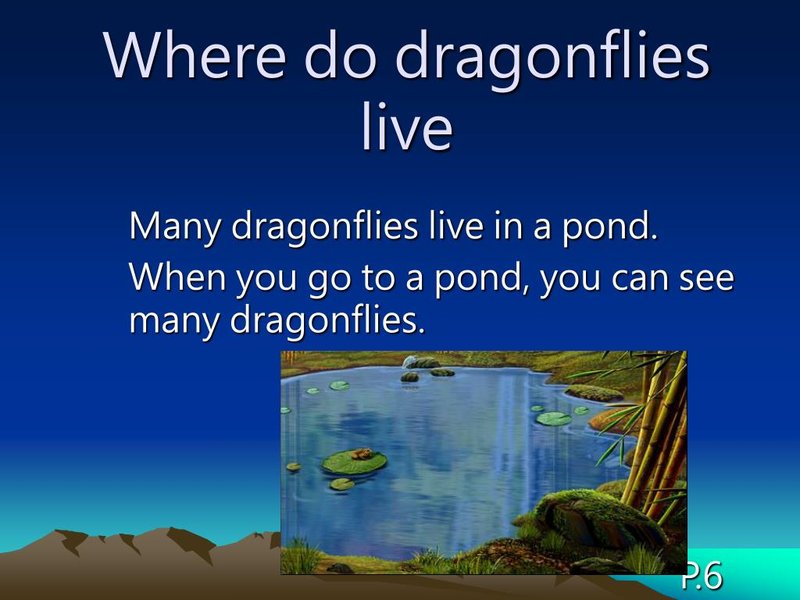
Imagine someone who can thrive in both water and air—it’s like they’ve got the best of both worlds. Dragonflies do just that as they spend a good part of their lives as aquatic nymphs before emerging as adults. Let’s dive into the world of dragonflies, exploring their habitats and the incredible ways they’ve adapted to survive in different environments.
Habitats: Where Do Dragonflies Live?
Dragonflies can be found all over the world, with over 5,000 species identified. They thrive in warm, wet climates, making freshwater habitats their primary home. You’ll mostly find them near ponds, lakes, rivers, and wetlands. These places provide the perfect conditions for their larval nymphs.
But here’s where it gets interesting: dragonflies aren’t just picky about water bodies. They prefer areas with abundant vegetation, like cattails and reeds, where they can hide from predators and hunt for food. If you’ve ever been to a serene pond filled with lily pads, you can imagine dragonflies darting around, searching for that perfect spot to rest or lay eggs.
Interestingly, as they mature, dragonflies become more adaptable. Some species can be found in urban areas, where they’ve learned to make use of smaller water bodies like fountains or swimming pools. That ability to thrive in different habitats shows how remarkable these insects really are.
The Life Cycle of a Dragonfly
Dragonflies undergo a fascinating transformation called complete metamorphosis. It starts in the water when female dragonflies lay eggs on the surface. Once the eggs hatch, the tiny nymphs emerge. This stage can last anywhere from several months to a few years, depending on the species and the environmental conditions.
During the nymph stage, these creatures are lethal hunters. They have a unique body structure that helps them catch prey, and they feed on aquatic insects, tadpoles, and even small fish. As they grow, they molt several times, becoming larger and developing the ability to breathe air—a crucial adaptation, especially as they prepare to transition to the next life stage.
Once they’re ready, dragonfly nymphs climb out of the water, often onto a plant, and undergo a dramatic transformation. They shed their exoskeleton, and in a few hours to a day, they emerge as stunning adults, ready to conquer the skies. This incredible life cycle allows them to adapt to both aquatic and aerial environments seamlessly.
Adaptations for Survival
Dragonflies are champions of adaptation. Their bodies are built for speed and agility, featuring long, slender abdomens and two pairs of wings that can operate independently. This allows them to hover, fly backward, and perform acrobatic maneuvers in midair. You might say they’re like the fighter jets of the insect world!
But their adaptations go beyond just flight. Dragonflies have excellent eyesight, thanks to their large, multifaceted eyes that can detect movement from almost every direction. This helps them spot both prey and potential threats quickly. It’s like having built-in radar!
Additionally, their coloration can play an essential role in survival. Many species have camouflage that helps them blend into their surroundings, making it harder for predators to spot them. Others display bright colors to attract mates or signal toxicity to would-be attackers. This combination of visual tactics is key to thriving in diverse environments.
Behavioral Adaptations
When it comes to behavioral adaptations, dragonflies are fascinating creatures. They’re not just passive creatures that float around; they have unique hunting techniques that set them apart. For instance, some dragonflies use a method called “hawk hunting,” waiting patiently before launching a quick attack on unsuspecting prey.
In addition, certain species have been observed migrating to suitable climates during seasonal changes. This migratory behavior ensures they find ample resources and suitable breeding grounds. Some even travel long distances, covering hundreds of miles to find the best habitats! It’s like their very own cross-country road trip, but in the sky.
Social behavior also plays a role in their adaptability. While many dragonfly species are solitary, some display territorial behaviors, defending their hunting grounds from others. This instinct to claim a space means they can secure food sources more effectively, which is a significant advantage in competitive environments.
The Role of Dragonflies in the Ecosystem
Dragonflies are not just beautiful insects; they serve essential roles in our ecosystems. They’re predators of pests, with adults feeding on mosquitoes, flies, and other small insects. In a way, they act as nature’s pest control, helping to keep insect populations in check.
Nymphs, on the other hand, play a crucial role in aquatic ecosystems. They help regulate populations of other aquatic creatures and contribute to nutrient cycling within their environments. So, when you see a dragonfly, remember that it’s not just hanging out; it’s doing its part to maintain a balanced ecosystem.
Additionally, dragonflies serve as indicators of environmental health. Because they depend on clean water to thrive, a decline in their populations often signals changes in aquatic ecosystems, such as pollution or habitat loss. This means that dragonflies can give us clues about the broader health of our environment.
Conservation and Threats
Unfortunately, dragonflies face various threats due to habitat loss, climate change, and pollution. Wetland drainage and development reduce the natural habitats they depend on, making it challenging for them to thrive. You might be wondering why this matters—well, the decline of dragonflies can impact entire ecosystems, affecting species that rely on them for food or environmental balance.
Conserving wetland areas is vital for dragonfly populations. This means protecting existing habitats and creating new ones, allowing these fascinating insects to continue to flourish. Organizations worldwide are working on habitat restoration and awareness, encouraging local communities to value these remarkable creatures.
By taking steps to safeguard their environments, we can ensure that future generations enjoy the sight of dragonflies dancing over the water, a symbol of a healthy ecosystem.
Why Understanding Dragonflies Matters
So, why should we care about dragonflies? Beyond their beauty, these insects are a crucial part of our ecosystems. They symbolize a healthy environment and the interconnectedness of life. When we understand where they live and how they adapt, we gain insight into the health of our planet.
By appreciating and protecting dragonflies, we also protect the wetland environments that support countless other species. Plus, who doesn’t want to spot a dragonfly flitting gracefully by on a warm day? It’s these little moments that remind us of the beauty in our world.
In conclusion, the life of a dragonfly is a remarkable journey from water to air, filled with adaptations that help it thrive in various environments. From their impressive aerial abilities to their ecological importance, these insects deserve our admiration and protection. So next time you see one, take a moment to appreciate the incredible story behind that delicate creature!

